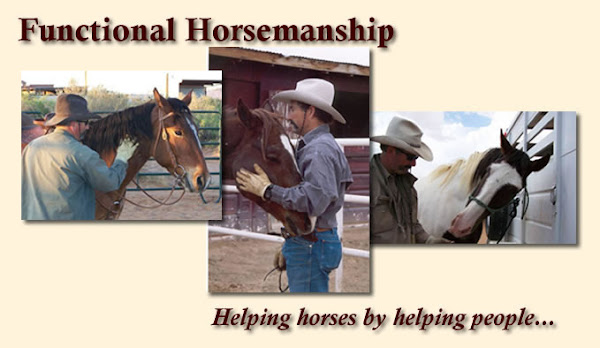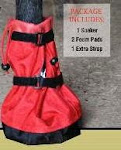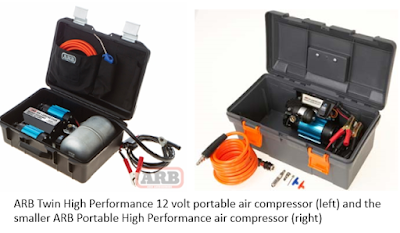Everett wrote to clarify some things on trailer loading. "I have several questions on trailer loading if you have the time to answer me. I own and have watched several videos on trailer loading and generally have no problems with my two horses, but encounter some problems when helping friends of mine with their horses getting in the trailer. Videos are great and have been my primary outside learning experience but you can't ask questions! (1) I've seen different trainers work their horses in different patterns before trying to load them such as circles or just going back and forth. Is any pattern okay or are their advantages and disadvantages with each? And if you are lunging a horse around a trailer then try to load her and she stops at the trailer and refuses to load, isn't she being rewarded with a rest anyway? (2) One problem I almost ways have with other's horses is a when you are asking the horse to get in the trailer she will move around the side of the trailer sort of hiding so how do you keep them straight? (3) Have you encounter a horse who won't step into the trailer because the trailer is too high? Will a ramp work better? Any answers you can give would be appreciated. Thank you for your site and videos as well. Respectfully, Everett".
Good questions Everett. The pattern that you lunge a horse in prior to asking him to attempt to load is really not important. What is are the reason for doing so and how you go about doing it. See diagrams before on two common patterns - although some people will lunge their horses in ovals on all sides of the trailer or lunge them from one side to the other - whatever you are comfortable with. I look at it these ways:
Although it often said or thought that the reason for working your horse outside the trailer prior to loading is to get him seeking that rest in the trailer. While this is pretty much true, I believe the primary reason for working the horse outside the trailer is to direct his feet therefore establishing leadership with him and getting him focused on listening to you, so when you ask him to enter the trailer it is an extension on what you just had been doing. Moving around the outside of trailer is useful on getting him sacked out on any anxiety with the trailer he may have. See figures 1 and 2 below - they are common patterns I do when working a horse into wanting to load.
I understand your point about working a horse then letting it rest at the trailer refusing to load. While it may be a physical rest for the horse (for a moment), as you are asking it to load it becomes mental pressure as the horse realizes you are asking it to do something it is wary of doing. Besides, you are not going to stay at this point for a long time. A few moments without an effort to load before you are back to working it. As long as the horse makes an effort, I'll stay at this point in the process.
As far as the trailer being too high for the horse to step into,....I think can't and won't are too different things, with can't stepping that high being a rare thing. The height of the trailer can add anxiety to the horse and the horse may leap into the trailer. This is why we don't stand in front of the horse leading them into the trailer. This can also cause additional problems if the floor is too slippery or not stable. I once refused to work a client's horse on trailer loading into his trailer because the floor would have likely cracked and it was looking possible for a horse to get his hoof through that floor. Can you imagine the damage if that happened on a moving trailer? All possible for want of a few dollars worth of 2x6 planks.
Anyway, before I forget, even if you have a trailer you can walk into leading your horse, it is a good idea in my book to also be able to send your horse into the trailer while you stay outside. On sending, sometimes the horse will turn around because it's hard to stop him from turning around while you are on the outside, so it's good to be able to back him out after sending him in. All good experience for the horse - makes him safer and more handier.
I don't have a trailer with a ramp nor have used a ramp much. I don't prefer them as you kind of need level ground behind the trailer for loading and un-loading. If you fashion a ramp for a ramp less trailer because you think your horse needs it to load, just make sure it is stable - won't move and will take the weight. A horse around 1,200 pounds becomes much more than that when stepping hard onto the ramp. I would think the 'sponginess' of some ramps may increase a horse's fear of loading.
I think your last question is what to do if your horse steps to the side of the trailer avoiding loading. If you are in the trailer (but off to the side) it's hard to keep a horse straight for loading that doesn't want to stay straight. I would likely go back to working the horse in circles or half circles, then going back to asking to load. Or you can use a lunge whip or just a stick to tap the horse on the outside of his barrel or butt to get him to move over and become straight again. Sometimes, I'll step out of the trailer and back the horse with energy, then walk back around to the trailer and ask him to load again. See figure 3 at left.
Some other important things are going to be:
When you lead a horse to a trailer to load, expect him to load just fine, otherwise he may sense your hesitancy and not load;
Remember that you can't pull a horse into the trailer - you can put a little pressure or hold on the lead rope momentarily so he understand you want him to come forward, but he needs to load on a loose lead - Good Lord this is likely the most common mistake - continue pulling on the horse trying to get him to load;
If he load's then back him out before he backs out under his own decision - then build on the amount of time he can stand in the trailer. It's okay to turn around if you can do it safely in the beginning but eventually he needs to be able to back out. I like to back a horse out under a loose lead when I'm inside the trailer and use the verbal cue "step" to help him identify the edge.
















































